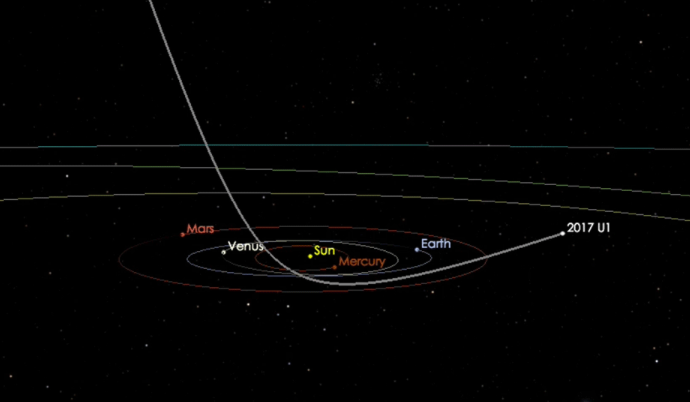An object that isn’t acting like most other objects in space has been picked up by a telescope in Hawaii that takes images for NASA.
On Oct. 19, the object was spotted traveling under Earth’s orbit by Hawaii’s Pan-STARRS 1 telescope on the Haleakala volcano in Maui.
Rob Weryk, a postdoctoral researcher at the University of Hawaii Institute for Astronomy (IfA), was the first to spot it. He sent images of the roughly 437-yard wide object to the Minor Planet Center in Cambridge, Massachusetts, then checked previous images taken by the telescope.
Sure enough, there it was the previous night—an asteroid or comet that he believes came from outside our solar system.
“Its motion could not be explained using either a normal solar system asteroid or comet orbit,” Weryk said in a press release.
The object, currently named “A/2017 U1” came from the direction of the constellation Lyra, NASA said, and is now heading at a clip of 27 miles per second toward the constellation Pegasus.
“This is the most extreme orbit I have ever seen,” said Davide Farnocchia, a scientist at NASA’s Center for Near-Earth Object Studies (CNEOS). “It is going extremely fast and on such a trajectory that we can say with confidence that this object is on its way out of the solar system and not coming back.”
More data is needed to confirm what the images suggest, so NASA is asking astronomers around the world to train their telescopes on the object, hoping that once the images are analyzed, they will know more about its origin and its composition.
“We have long suspected that these objects should exist, because during the process of planet formation a lot of material should be ejected from planetary systems,” said Karen Meech, an astronomer at the IfA specializing in small bodies and their connection to solar system formation. “What’s most surprising is that we’ve never seen interstellar objects pass through before.”
“We have been waiting for this day for decades,” said CNEOS Manager Paul Chodas.
Since this is the first object like this to be discovered, there are no rules for naming it; The International Astronomical Union will have to create a naming convention.

































Leave a Comment
You must be logged in to post a comment.